Did North Korea Kidnap an American Hiker?
When 24-year-old David Sneddon disappeared hiking around western China, officials chalked it up to a drowning. Only a decade later did another scenario emerge: maybe David had been kidnapped and taken to North Korea.
New perk: Easily find new routes and hidden gems, upcoming running events, and more near you. Your weekly Local Running Newsletter has everything you need to lace up! .
In the Northern reaches of China’s Yunnan province, just before the rolling hills and deep, river-carved ravines of the Yungui Plateau give way to cascading sheets of limestone and spectacular karst, two mountains—Jade Dragon and Haba Snow—jut three and a half vertical miles into the sky. Separated only by the Jinsha River, a 100-foot-wide whitewater tributary of the Yangtze, these scabrous peaks form one of the world’s deepest river canyons: .
Etched into the steep terrain above the wild rapids, the 16-mile High Trail climbs more than 3,700 feet through the canyon’s thick mountain brush and sheer cliffs. The trail, which usually takes two days to complete, is considered a must for trekkers searching for remote panoramic vistas in China, with Tibet looming to the west and Myanmar, Laos, and Vietnam to the south. The route is littered with commercial guesthouses, where tens of thousands of tourists—almost exclusively from China or South Korea—can buy a hot meal and sleep in a real bed.
On August 11, 2004, He Shuchang, a local guide, had been trekking for hours with his two clients, a married couple from Hong Kong, when he spotted a pale Westerner marching up the mountain path in the twilight. The stranger wore a blue T-shirt and gray shorts, with a fanny pack tied to his waist and a floppy brimmed rain hat covering his prematurely balding head. He Shuchang was used to seeing the occasional Westerner. Still, when the man emerged over the rise, then politely asked in flawless Mandarin if he could join the group, He Shuchang was stunned. What was this stranger doing here?
[quote]What most Americans don’t know is that North Korea has been systematically kidnapping foreigners for the past 60 years.[/quote]
The man introduced himself as David Sneddon, an American college student who was taking summer language classes in Beijing. He seemed charming and curious, peppering the Hong Kong couple with questions about themselves and alternating between Mandarin and English. The couple seemed to enjoy him, so He Shuchang let him stay. They hiked together for several hours, eventually reaching the far end of the gorge, where they all spent the night at Tina’s Guesthouse. The next morning, David continued alone up the route away from the High Trail, vanishing as suddenly as he had appeared.
In Logan, Utah, David’s parents, Roy and Kathleen, were thinking about their son. They had last seen him three and a half months earlier, when David, 24, stopped by their home to pack his clothes and say goodbye. He had just completed his junior year at Brigham Young University and told them that his summer plan was to go to Beijing to study Mandarin, renting an apartment with fellow BYU student George Bailey. He would then spend a couple of weeks hiking around western China.
Some parents might be leery of such a plan, but not Roy and Kathleen, both devout Mormons. Their 11 children had completed lengthy missions around the world; David served in South Korea. David was not as academically gifted as his siblings but he was a hard worker, and his parents admired his yearning for a life of adventure and travel. Besides, he planned to return in the fall to finish his bachelor’s degree in Asian languages and apply to law school.
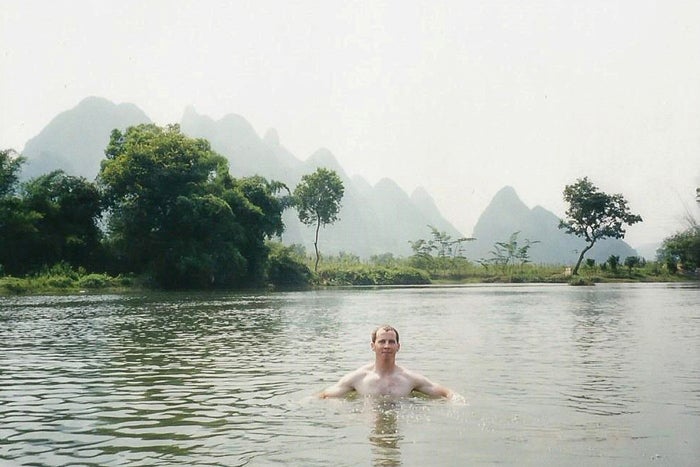
From Beijing, David e-mailed his parents two or three times a week. When classes ended in early August, he wrote with details of his plan to travel until the 26th, the day he was scheduled to fly to Seoul, where his older brother, Michael, ran a corporate translation business. “I’m in Lijiang now, in western Yunnan province,” he wrote on August 11. “I will take a bus to hike Tiger Leaping Gorge in about half an hour. I am having a great time here but nonetheless am excited to come home.”
A week went by without another e-mail. Roy and Kathleen began to worry, but told themselves that their son was probably in a remote area without Internet access. They felt comforted knowing that David would soon meet up with his brother.
On August 26, Kathleen was visiting grandchildren in Provo, Utah, when her cell phone rang. It was Michael, calling from Seoul.
“David isn’t here,” he said. “He didn’t make it.”
That call would mark the beginning of the Sneddons’ agonizing quest, now nearly ten years old, to find their missing son. The search has taken family members to Yunnan province and back three times to look for clues, but with little assistance from Chinese or American officials, David’s disappearance has remained an infuriating and elusive case to solve. It wasn’t until April 2011 that the Sneddons finally received an explanation that seemed plausible, when a former high-level U.S. official called with a startling theory: “I believe David may have been kidnapped by the North Koreans.”
At night, of the Korean Peninsula show South Korea crackling with activity and light. By contrast, its neighbor and longtime adversary, North Korea, remains virtually dark.

Surprisingly little is known about the so-called Democratic People’s Republic of Korea. Even today information trickles across its borders only in small doses. It is considered the most repressive and corrupt nation on the planet, ruled by the Kim family, a gangster dynasty whose patriarch, Kim Il Sung, took power at the end of World War II. He was succeeded by his son Kim Jong Il and, more recently, his grandson —all three of them maintaining power by brainwashing citizens with relentless propaganda and enslaving detractors in brutal prison camps. Americans have come to know North Korea as a reliable source of headlines that are both bizarre (“”) and frightening (“”).
What most Americans don’t know is that North Korea has been systematically kidnapping foreigners for the past 60 years. Since the Korean War Armistice in 1953, North Korea is suspected to have abducted 3,824 South Koreans (in addition to more than 100,000 taken during the war) and as many as 100 Japanese and 200 Chinese. According to the , there have been at least 25 additional abductees from countries including France, Italy, Jordan, Lebanon, the Netherlands, Romania, and Thailand.
The regime’s motives are not always clear, but over the years a few patterns have emerged. In 1976, after Kim Jong Il began efforts to strengthen his intelligence operations, the nation started targeting linguists who could teach foreign languages to North Korean spies selected to carry out operations abroad. In 1987, for example, North Korean agent , who spent three years taking Japanese lessons from an abductee, boarded Korean Air Flight 858 with a fake Japanese passport and planted a bomb that killed 115 people.
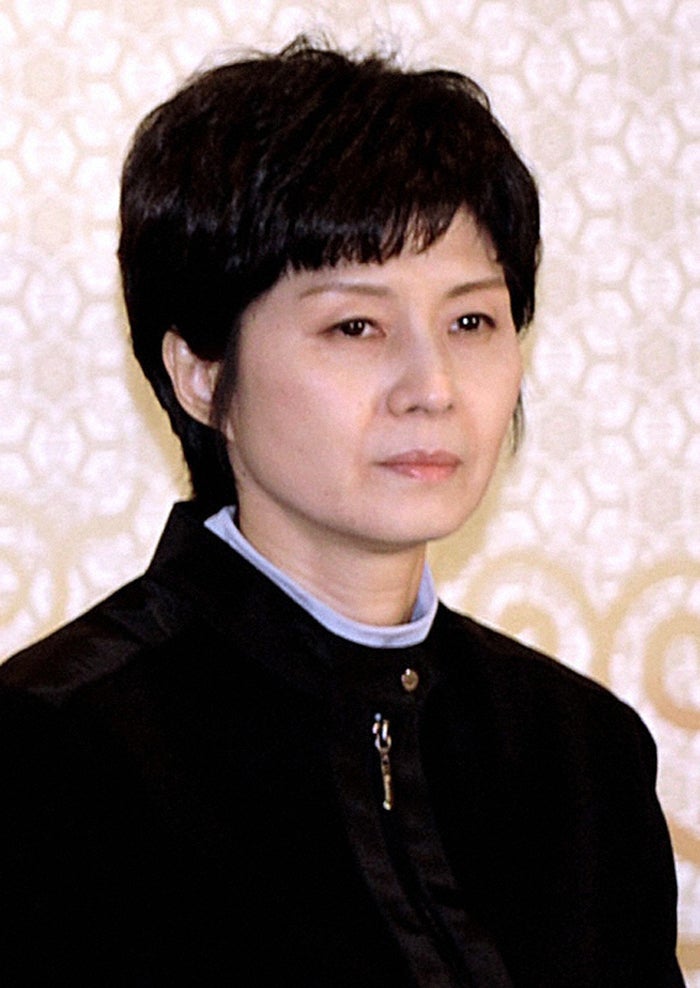

More recently, North Korea has kidnapped people in China to deter dissidents from trying to escape—as well as dissuade others from assisting them. That’s where Yunnan province comes in. Despite its heavenly mountain setting, the region has long been a thoroughfare for an , a network of safe houses and secret routes that shuttles North Korean refugees through China and into Southeast Asia. Aided mostly by Christian activists from the West—many of whom speak Korean—refugees must escape North Korea and then elude Chinese authorities, who have a zero-tolerance policy when it comes to harboring them. North Korean security agents also operate along the route, searching for fugitives with the tacit permission of the Chinese government.
While the subject of North Korean abductions is not widely publicized in America, in Japan it is considered a top international human-rights issue. The government and various nonprofit groups spend more time and effort gathering intelligence on the phenomenon than in any other country in the world. In 2002, North Korea’s “supreme leader” Kim Jong Il even admitted to the kidnapping of 13 Japanese citizens in the late seventies and early eighties. The regime returned five but claimed that the other eight had died while in detention. (Several of the death certificates provided by North Korea turned out to be phony, and DNA testing of the supposed remains was inconclusive.)
In many of the Japanese abduction cases, highly trained North Korean agents snatched the victims inside Japan without leaving a trace. In fact, many of the victims’ parents spent decades with no inkling that North Korea was involved. Another common trait: nearly all of the abductions occurred in the summer months leading up to August 15, . Additionally, a good number of these victims fell prey inside Korean-run cafés and restaurants. In 1977, North Korean agents lured Japanese citizen into one such restaurant and abducted him. Three years later, was kidnapped from a Korean noodle shop in Osaka. In 2000, , a permanent U.S. resident from the Chicago area, was in China helping North Korean refugees when he was reportedly abducted from a Korean café. He was later executed.
And in 2004, David Sneddon was last seen leaving a Korean restaurant in Shangri-La, a small tourist city not far from Tiger Leaping Gorge. It was August 14, the day before Liberation Day.
I first met Roy and Kathleen Sneddon at their house outside Logan. Logan is home to Utah State University, where the two met as undergrads nearly 60 years ago. Hand-built by Roy and David in 2001, their bright blue house stands out in an otherwise drab neighborhood overlooking the Wasatch Mountains. Roy and Kathleen, both 78, are short and trim with graying hair.
In the weeks that followed David’s disappearance, information trickled in from the U.S. embassy. The Chinese had conducted an initial investigation and . David was not in any hospital, mental ward, or jail. No body had surfaced. His passport had not been used, and the $700 in his bank account remained untouched. Local police had ruled out murder and violent crime, which were practically nonexistent in the region. With seemingly little evidence to go on, Chinese officials concluded that David had simply fallen into the Jinsha River and died.
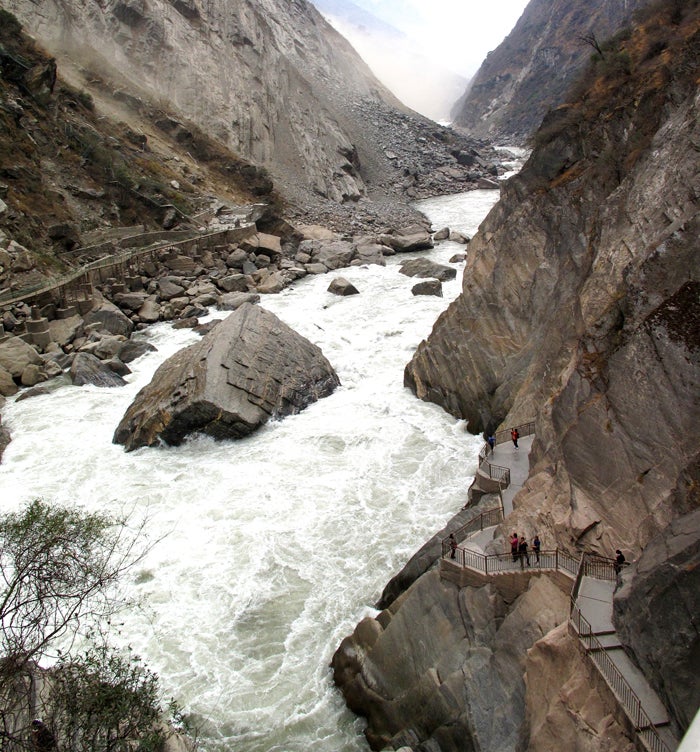
Back in Utah, Roy and Kathleen were skeptical. David was an experienced hiker and an Eagle Scout who spent his childhood backpacking in Wyoming’s Wind River Range. It was hard to believe that their son had slipped on such a heavily trafficked trail and fallen into the river. But if David had fallen and drowned, it seemed even less likely that his body hadn’t turned up. While mudslides and falling rocks during the rainy season have claimed a handful of hikers in Tiger Leaping Gorge over the past two decades, in every instance the body was recovered.
Roy and his two sons, Michael and James, decided to go to Yunnan and retrace David’s path for themselves. On September 13, 2004, the men reached the small village of Qiaotou just outside the trailhead at the gorge. Accompanied by a translator and a hiking guide, the Sneddon family started down the trail. Right away they saw missing-person posters with David’s photo. They also saw police officers wandering aimlessly with bloodhounds, ostensibly searching for David despite a month passing since his disappearance. “It was ridiculous,” says Michael, who decided the effort was all for show. “We just laughed and said thanks.”
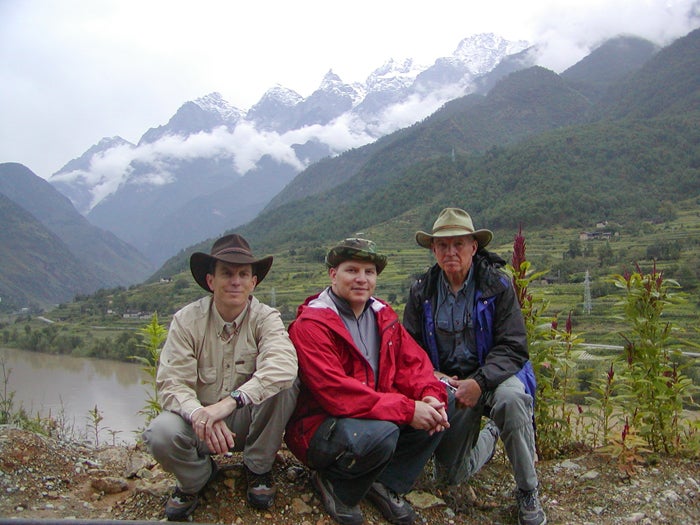
The three Sneddon men carried on, marveling at the scenery and feeling guilty that they were almost enjoying themselves. The group had been hiking less than two hours when they ran into a trekker headed the other way. His name was He Shuchang.
He Shuchang knew the Sneddons’ guide and described his encounter with a Westerner a month earlier, hiking with him to Tina’s Guesthouse at the far end of the gorge. When He Shuchang recognized a photo of David, Roy couldn’t believe his luck. He didn’t want to get his hopes up, but it seemed to be clear evidence that David had made it through the gorge.
When Roy and his sons arrived at Tina’s the next afternoon, however, the police were already there. A worker told them that the owner was out shopping and that no one could remember whether David had stayed there. Chinese law requires hotels and guesthouses to keep a written log of foreign visitors, complete with names and passport numbers. When Michael asked to see the log, the man at the check-in desk told him that every month for the past year was available but August had been confiscated by the police. That was the case at every lodge they visited along the trail. “It was highly suspicious,” says Michael, “and it certainly felt like a cover-up.”
From Tina’s the road splits in two. One route loops back to the trailhead and then south to Lijiang. The other heads north to the city of , so named by the Chinese in 2001 to promote tourism. David’s final e-mail mentioned that he was excited to be “really, really close to Tibet.” Following a hunch, the Sneddons took the road to Shangri-La.
In the city, the Sneddons spent a fruitless afternoon asking shop owners about David. Discouraged and somewhat daunted by the size of the city, the three men gathered together at their guesthouse that evening and prayed. Afterward they agreed to give Shangri-La one more day.
The next morning, James stumbled upon the Yak Bar, a cozy, one-room Korean restaurant with wooden floors and pink walls adorned with Korean flags, located 100 yards from a police station and a massive jail. Given David’s love of all things Korean, the Sneddons went to check it out and met one of the owners, a round-faced woman in her mid-twenties named Zhang Xiao Fen. Looking into her dark brown eyes, Roy could tell that Zhang understood exactly what was going on. When Roy showed Zhang a photo of David, her eyes lit up and she smiled. “She definitely remembered David fondly,” Roy says. “It was tremendously exciting.”
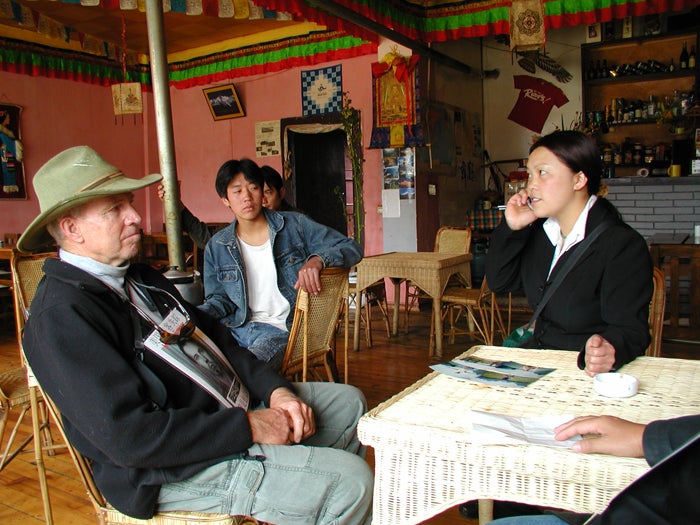
She accurately described his clothing and recalled that he spoke Mandarin and Korean. He had come into the restaurant three times over two days and had eaten cheaply, like a student on a tight budget. Zhang told the Sneddons that David stopped by for the last time around noon on August 14 to say goodbye; she assumed he was leaving Shangri-La. That would have made sense, given David’s original plan. To make his scheduled flight to Seoul, he would have had to get to Lijiang that evening and hop on an early-morning bus on the 15th.
In all, the Sneddons found 12 people in the gorge and in Shangri-La who remembered David and could identify his picture. All signs pointed to David making it out of the gorge and disappearing in Shangri-La, not doubling back and tumbling into the Jinsha River. “At this point,” Roy says, “we were 100 percent certain that what the Chinese government told us was not true and that David did not fall into the gorge.”
When the Sneddons returned to Utah, they set up a website, , and wrote a , which they sent to the U.S. State Department. Surely the government would recognize their discoveries and act.
The first response came by e-mail. Gavin Sundwall, a diplomat stationed at the embassy in Beijing, wrote that a special-investigation unit had looked into the Sneddons’ report and had not “produced any tangible leads.” It took another eight months of relentless correspondence to convince the Chinese to launch their own follow-up investigation and to interview the people who claimed to have seen David.
The results were crushing. All 12 sources changed their stories. He Shuchang now said he couldn’t be certain that the man he met on the trail was David. At the Yak Bar, Zhang told police that the photos of David looked like a customer she met in August but she wasn’t sure. The same routine played out over and over. David’s parents wondered if the witnesses were intimidated into recanting. In the end, the Americans and the Chinese deemed the evidence “inconclusive,” determining again that David most likely died in Tiger Leaping Gorge.
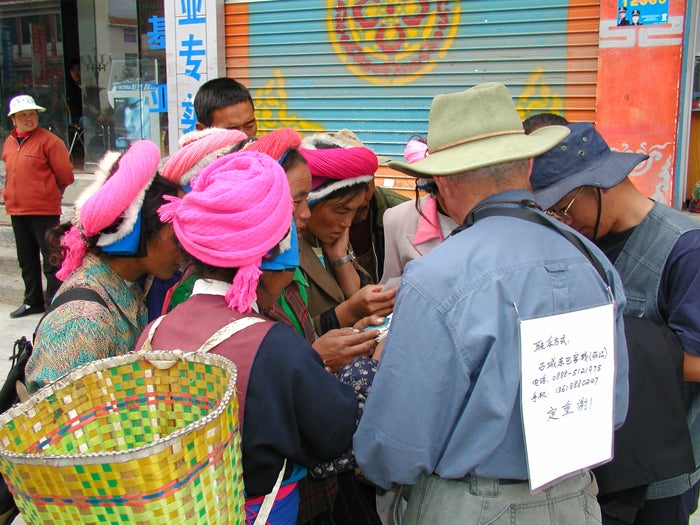
Last fall I spent a few days hiking the High Trail through Leaping Tiger Gorge and visiting Shangri-La, hoping to track down some of the same people the Sneddons had talked with on their first visit. Getting information wasn’t any easier. Many of the shops and guesthouses had changed names and owners. But the Yak Bar was still there, though it had undergone several renovations. A woman sitting outside the kitchen told me, through my interpreter, that she opened the business in 2002. When I asked about an American who went missing in 2004, she didn’t reply. When I asked using the name “Sneddon,” her eyes grew wide and she shook her head. “I have no memory,” she said. She asked to us to leave.
In 2011, seven years after David’s disappearance, Nicholas Craft, a Mormon attorney who served his mission in South Korea after David and had read about him on the Sneddons’ website, was interviewing for a job at the Committee for Human Rights in North Korea with its executive director, , a longtime deputy director of the Pentagon’s East Asia office. At the end of his interview, Craft was getting up to leave when he asked, “Have you ever heard of David Sneddon? I always thought that North Korea might have been involved in his disappearance.”
Downs was an expert on North Korean abductions. He on the topic and had testified before Congress. But he had never heard of David. He leaned forward in his chair. “Sit back down,” he told Craft, “and tell me everything you know.”
As he listened to the saga of David’s disappearance and his parents’ investigation, Downs was amazed at how many of the details fit so well with the familiar patterns of North Korean abductions. For starters, the lack of any evidence pointed to trained professionals. And Downs knew that, as a talented linguist, David would have been a prized catch. Not only did he speak Korean, but he also spoke English without any trace of a regional American accent—a coveted asset in training agents. By midsummer 2004, North Korea had lost one of its few remaining American English teachers, Charles Jenkins, who on July 9, one month before David disappeared.
Downs also remembered that the summer of 2004 was particularly tense for U.S.–North Korea relations. That year, on July 21, the House of Representatives had passed the , which condemned the dictatorship’s human-rights record, promoted assistance to refugees, and established a presidential envoy at the State Department to address those issues. “The U.S. is well advised to stop its rash acts,” the regime warned in response, “and to ponder over the grave consequences to be entailed by its extremely hostile moves to isolate” North Korea.
North Korea was again outraged a week later when Vietnam allowed a record to enter South Korea. In the largest mass defection since the end of the Korean War, these North Koreans had all crossed China through Yunnan province to reach Vietnam. As a result, North Korea withdrew its ambassador from Vietnam and canceled scheduled talks with South Korea.
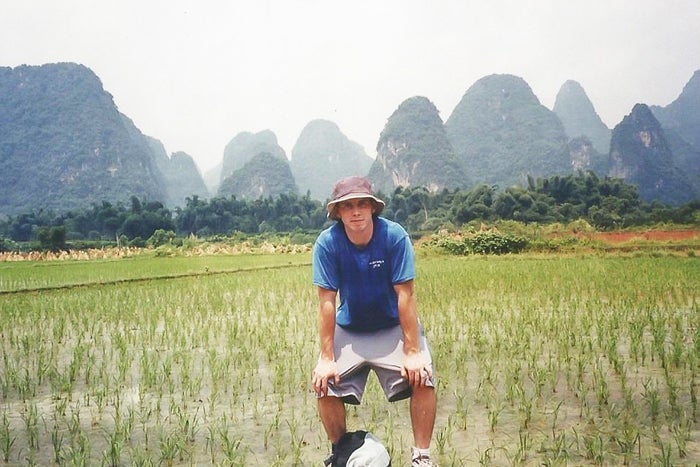
And there was one more event, Downs recalled, one that seemed too eerie to be mere coincidence. A few months before Sneddon disappeared, Chinese authorities arrested a high-profile North Korean defector named near the Yunnan-Laos border. Kang, a chemical engineer, was supposedly carrying documents revealing that North Korea was testing chemical weapons on prisoners. In Downs’s mind, Kang’s arrest was clear evidence of cooperation between Chinese and North Korean agents.
Finally, Sneddon was last seen at a Korean restaurant in Shangri-La, which fit North Korea’s pattern of using cafés as part of a global network that uses state-run businesses as . These secret hubs, located in 30 to 40 countries but concentrated in China, employ roughly 30,000 workers who send more than $100 million in cash per year to the regime and provide cover for spies. Perhaps the two women operating the Yak Bar in the wild west of China were part of the network or had helped supply information about suspicious visitors in exchange for local protection. Surely, at the very least they knew the value of informing on an American, traveling alone, who spoke Korean and Mandarin.
[quote]“It’s hard to wrap your mind around the idea that a nation-state might have picked up your kid from a foreign country,” says Kathleen. “But after the conference, we thought it might be a 75 percent chance.”[/quote]
Downs understood that the evidence was all circumstantial, but he knew how North Korea operated. After Craft’s interview, Downs began investigating the case. He’s now convinced that David was abducted. “I believe that David is in North Korea as strongly as you can believe anything,” he told me last summer. “I don’t see any other explanation. I just do not doubt it.”
In April 2011, Downs picked up the phone and called Kathleen Sneddon to share his theory. Kathleen was guarded but allowed Downs to run through the evidence. His plan was not to convince her but to get her and Roy on a plane to Washington, D.C., where he was hosting a conference for Korean and Japanese families of abductees. “Come speak with them,” Downs told her, “and see if you feel you have something in common.”
There is little information about what life is like in North Korea for kidnapped foreigners, but most of what we do know has come from the Japanese who managed to escape or were released. Many are reluctant to speak for fear that the North Korean regime will retaliate against family and friends, but a few have shared their stories. One of the best known cases involves Kaoru Hasuike and his then girlfriend, Yukiko Okudo.
In 1978, the pair wandered away from a crowd of beachgoers in Kashiwazaki City, Japan, onto a quiet stretch of sand where they held hands and watched the sun set. As the waves crashed against the shore, several men approached, and one asked for a cigarette lighter. Before either could answer, one of the men punched Hasuike in the face while another tied his arms together, forced a gag into his mouth, and shoved him into a large sack along with Okudo. The men loaded their captives into an inflatable speedboat and roared off into the night. The next time the couple saw land was two days later, when they arrived in North Korea.
Hasuike was separated from Okudo and taken to a so-called guesthouse in a valley where he was surrounded by barbed-wire fence and armed guards. During 24 years of captivity, Hasuike’s captors forced him to read the teachings of Kim Il Sung and kept him hidden from other abductees, routinely moving him from one house to another. He was put to work as a translator, and he felt torn rewriting Japanese newspaper articles in Korean. After two years, he was reunited with Okudo and allowed to marry. The couple had a son and daughter and decided to lie to their children, telling them they were Korean so that others would not discriminate against them. Hasuike said it was “the longest and most bitter period of my life.”
Hasuike was released in 2002. When he reunited with his family in Japan, he told his brother Toru that he was “a citizen of North Korea” sent to Japan to “normalize” relations between the two countries—a clear indicator of relentless brainwashing. Over time, however, Hasuike adjusted to life outside North Korea and began teaching at a university. Toru saw the effects of the indoctrination begin to fade and concluded that Hasuike had not been permanently altered but was “wearing body armor to protect himself from North Korea.”
There are no officially recognized cases of abducted Americans, but the experience of U.S. Army sergeant Charles Jenkins probably offers the best glimpse of how American—possibly even David—might be treated.

In 1965, Jenkins, then 24, with a distinct North Carolina drawl, was stationed at an outpost along the edge of the demilitarized zone between North and South Korea. On a cold January evening, after guzzling nearly a dozen beers, he set off as though going on his nightly patrol duty. Terrified of being sent to Vietnam, Jenkins told his supervisor that he was going to check out a strange noise and crossed into North Korea. His plan, poorly thought out, was to get captured in hopes of being sent to the Soviet Union, North Korea’s Cold War ally, and then eventually shipped back to the United States. “I did not understand,” Jenkins later said, that “once someone goes there, they almost never, ever get out.”
Jenkins was blindfolded and taken to a small house outside Pyongyang, where North Korean soldiers interrogated him for ten days. Afterward, Jenkins was taken to another house and forced to live in a tiny bedroom with three other American soldiers who had defected: Larry Abshier, Jerry Parrish, and James Dresnok. A six-foot wall surrounded the house, and outside a guard kept watch from a crow’s nest on top of a telephone pole. Jenkins , “I suffered from enough cold, hunger, beatings, and mental torture to frequently make me wish I was dead.”
Jenkins eventually began teaching English to North Korean soldiers. For many years, his lectures were recorded for others. He was forced to appear in anti-American propaganda films and television shows. All captive foreigners endured daily reeducation and indoctrination classes. Prisoners also engaged in a mind-control exercise that required them to admit their faults and pledge their allegiance to the supreme leader.
Arranged marriages were also part of prisoner life. Late at night on June 30, 1980, Jenkins heard a knock on his door. When he opened it, he saw a 21-year-old woman in a white blouse, a white skirt, and white high heels. “I had never seen anybody so beautiful,” Jenkins said of meeting Hitomi Soga, a Japanese abductee who would become his wife. “In those grubby old surroundings, it was like she was from a dream or an entirely different planet.” The two bonded over their hatred for North Korea and eventually had two daughters. In 2002, Soga was one of the five Japanese prisoners allowed to return home after Kim Jong Il admitted to their abductions. Back in Japan, Soga’s stories of her American husband and her children still in North Korea were taken up by the media, and in 2004 North Korea released Jenkins and their two daughters. Today the couple lives a quiet life in a remote village in Japan.
Through the years, Roy and Kathleen Sneddon ran through every conceivable explanation for David’s disappearance, but nothing ever gave them a sense of finality. They ruled out drowning after finding evidence that he hiked safely across the gorge. Murder? Chinese authorities and locals swore that violent crime was virtually nonexistent in the region. Suicide? Nothing pointed to depression. In fact, David was excited about his senior year at BYU and had already paid for student housing with his own savings.
In May 2011, when the Sneddons returned home from meeting with Downs and the families of abduction victims, they finally had an explanation that seemed plausible—even if it also sounded patently absurd. “It’s hard to wrap your mind around the idea that a nation-state might have picked up your kid from a foreign country,” says Kathleen. “But after the conference, we thought it might be a 75 percent chance. The North Korea thing was just a puzzle piece that seemed to fit.”
More pieces soon followed. In winter 2011, an organizer of unofficial meetings between the U.S. and North Korea asked a North Korean diplomat about David. “What was remarkable to me, having dealt with North Korean officials for years and expecting a reaction of outrage,” said the organizer, who is speaking out for the first time on the condition of anonymity, “was the total lack of surprise at the intimation that something of this kind might have occurred at the behest of authorities. He asked me to spell [David’s] name, and the fact that he was willing to note the name indicated to me that he was not excluding the possibility that this might have happened.”
-and-guide-Sean-(right).jpg?width=800)
The following year, in May 2012, the Tokyo nonprofit dropped a bombshell. One of the organization’s most reliable sources, a North Korean defector who had provided flawless intelligence to NARKN for years, had obtained Chinese security documents indicating that in August 2004, a 23- or 24-year-old American studying at a Chinese university was arrested in Yunnan province on charges of helping illegal residents. According to the documents, authorities had released the American in September, and he’d ended up in the hands of five North Korean secret agents who were in the area searching for defectors. NARKN was certain it had to be David.
“We have much confidence in our source and have no reason to doubt this information,” says NARKN vice chairman Yoichi Shimada, speaking publicly for the first time during an interview last fall. Shimada believes that corrupt officers sold information about David’s release to North Korean agents.
The following month, the Sneddon family received yet another lead from a man in South Korea with close ties to the North Korean defector community. (His identity cannot be revealed for his safety.) The man told the Sneddons that an American in his early thirties who matched David’s description had been spotted teaching English outside Pyongyang, the North Korean capital. This information has not been corroborated, and if David is indeed in North Korea, Downs says, “he would be in a highly controlled environment, and most North Koreans would not ever know he was there,” making verification difficult.
While NARKN’s information appears genuine, some skeptics question the organization’s credibility and accuse it of using David’s case to raise the profile of its own political agenda. If an American abduction could be confirmed, the issue would undoubtedly receive a huge publicity boost. The Sneddons, however, don’t seem to care about NARKN’s motives. “They may be using us,” says Kathleen, “but we’re also using them. It doesn’t mean they’re lying.”
Last May, I sat next to David’s brother, Michael, in the third row of an auditorium at the Japanese Embassy in Washington, D.C., for a symposium on North Korean abductions. Michael flew in from Germany, where he now lives with his family. Waiting for the event to begin, Michael tapped his finger on his knee and trained his eyes on the two people in the room who might help find David: Keiji Furuya, Japan’s cabinet minister in charge of the abduction issue, and U.S. ambassador Robert King, special envoy for North Korean human-rights issues.
At intermission I approached Furuya, who told me that he and Japanese Prime Minister Shinzo Abe believe that NARKN’s information is entirely credible. “It is most probable that David Sneddon is still residing in North Korea,” he said. “But I do not think that the United States is working fast enough to collect evidence.” And since David is an American, he lamented, Japan can’t get involved.
Ambassador King stated in his symposium remarks that the United States’ “commitment to this issue could not be stronger.” But in reality, officials want nothing to do with David’s case. Since David’s disappearance, Roy and Kathleen have written 55 letters to various members of the State Department, including Hillary Clinton during her time as the department’s secretary. Most went unanswered, but the replies that did come were infuriating. Under the Privacy Act, the U.S. government will not release any information about David without David’s written consent. To Roy and Kathleen, it is the mother of all catch-22’s.
-on-power-pole-on-gorge-trail.jpg?width=800)
In November 2012, a friend of the Sneddon family filed a Freedom of Information Act request with the State Department for all records related to David. Though the request turned up 14 documents, the government refused to release 13, citing concern for privacy and the “interest of national defense or foreign relations.” The one document they did release simply stated that China had not found any trace of David.
For the Sneddons, these concerns are infuriating. Why would the United States be reluctant to search for one of its own citizens? But to anyone familiar with the delicacy of high-level diplomatic relations, the government’s position on the issue is understandable. Asking too many accusatory questions about David could potentially threaten America’s vital relations with China. If David was in fact detained in China, it would mean that China broke its treaty obligation to inform the U.S. within four days. Pressing the issue with North Korea, meanwhile, would jeopardize possible nuclear negotiations. “It’s simply more convenient for the United States if David is dead,” Michael Sneddon says.
As of now, nearly a decade after David vanished, the Sneddons are still asking the same questions, still hoping for that one additional shred of evidence to compel the powers that be to intervene.
David’s parents’ home in Logan remains a shrine to their missing son. Nearly every surface, from the living-room walls to the refrigerator, is dotted with pictures of David: in his crib as a baby, playing ice hockey, traveling in China.
“I don’t want to forget him,” Kathleen says. “How would I feel if he came through the door and said, ‘Mom, you don’t have any pictures of me’? I’d want to scream, ‘No! I kept you in my heart and my mind and my prayers, and you were always there.’ I can’t take the chance that he’d think we forgot him. People say we’re crazy, but that’s their business.”
Kathleen envisions David as a 34-year-old man, married with children. If he is teaching English in North Korea, she imagines that he is enjoying himself and making the best of his new life behind the iron veil.
The day before David left for China, Kathleen talked with her son deep into the night. The following morning, she was so busy helping him finish packing that his departure seems like a blur. She knows she waved goodbye as she stood on the front porch watching David pull out of the driveway, but she can’t remember giving him a hug or saying “I love you.” “I just have to trust that I did.”


